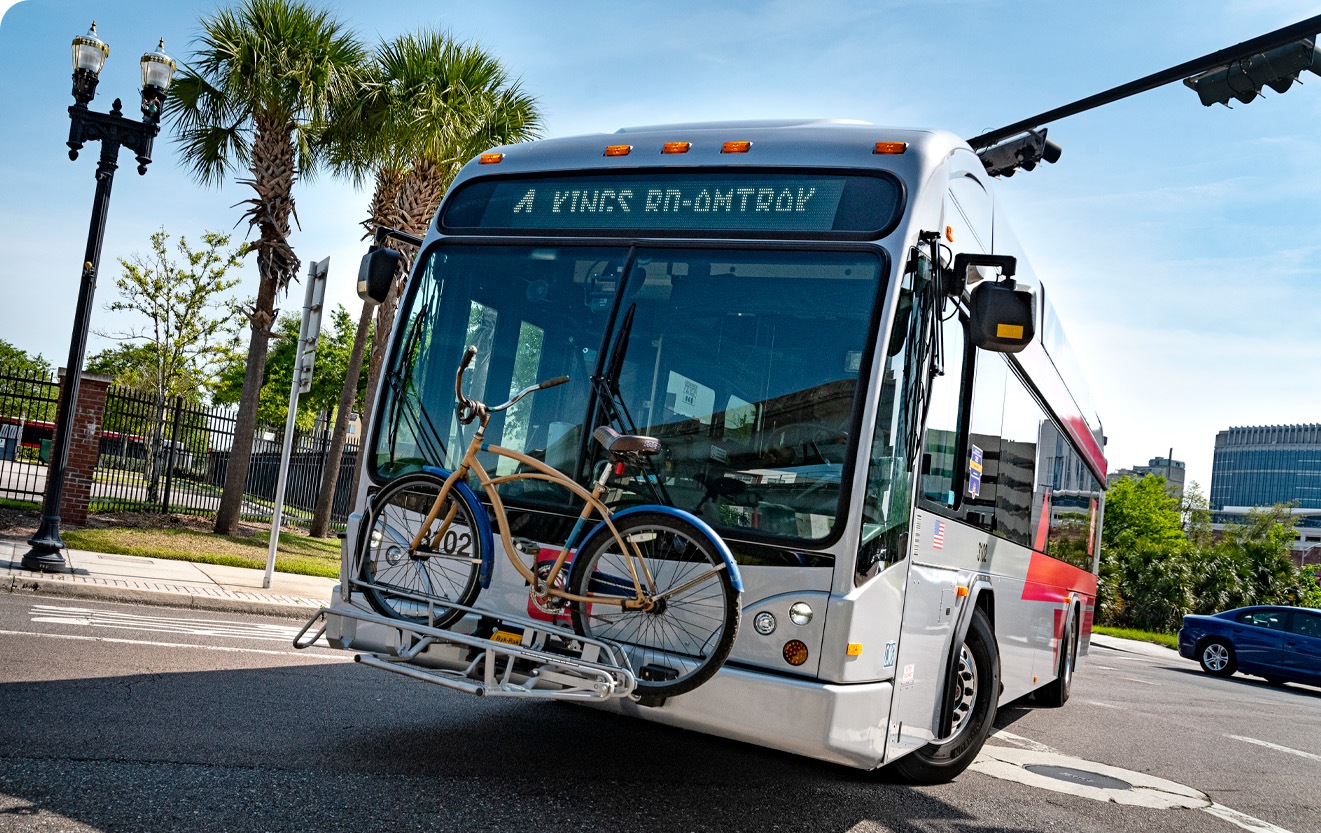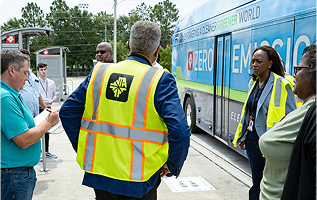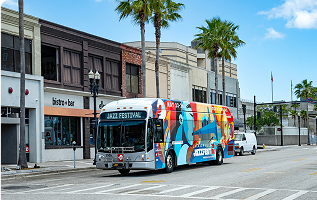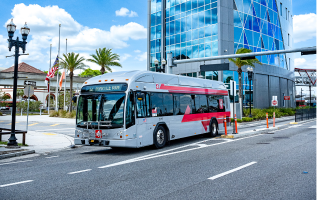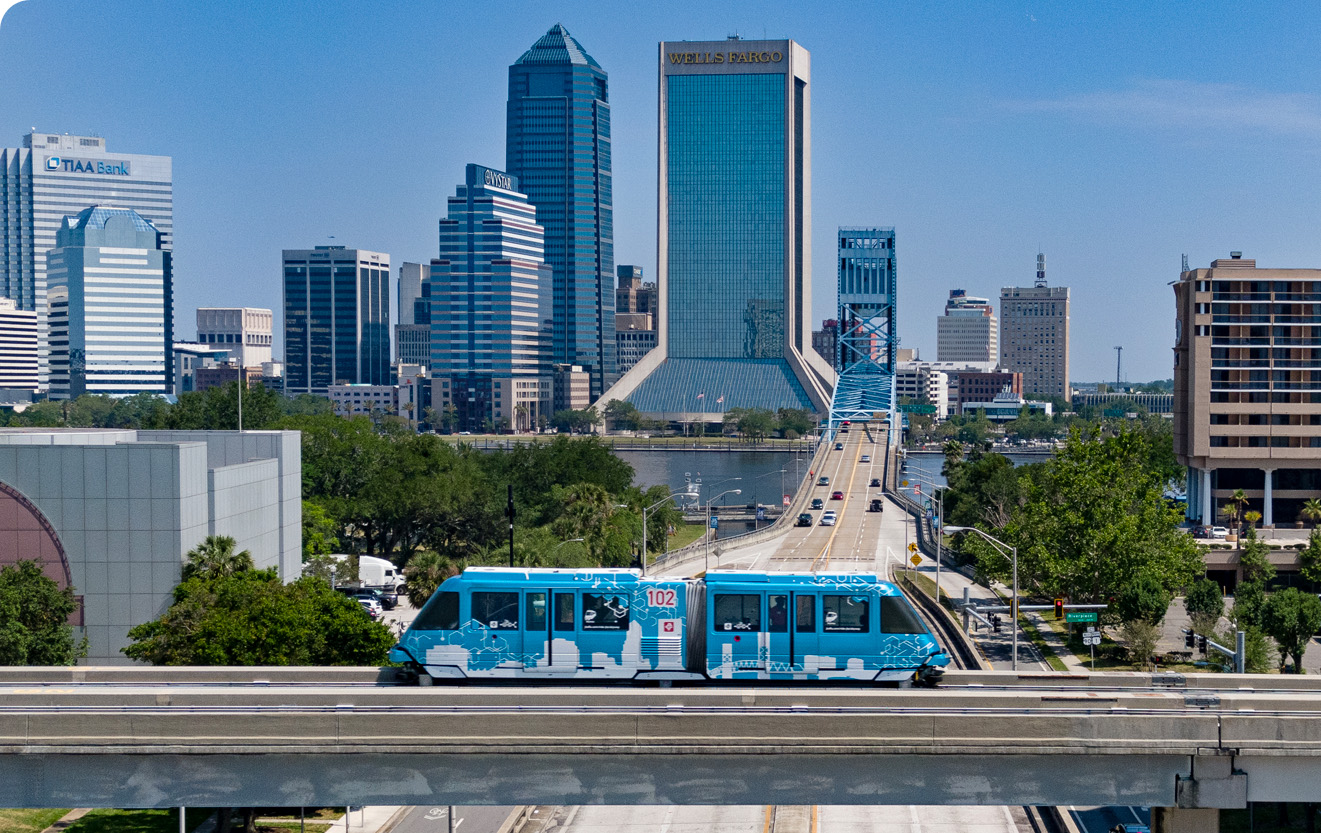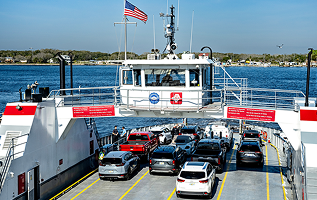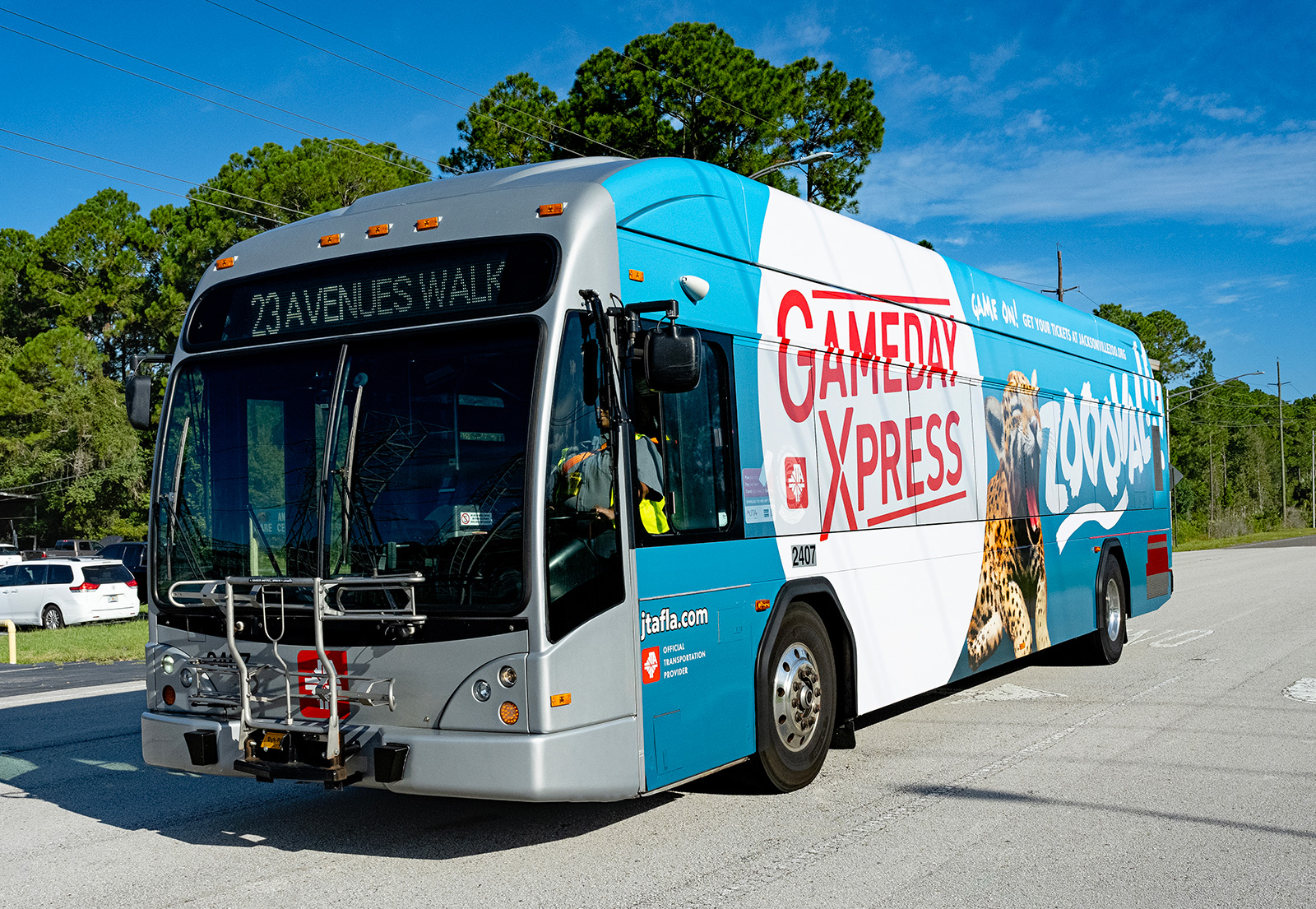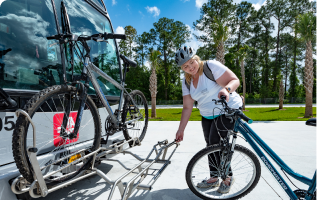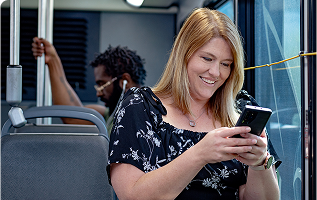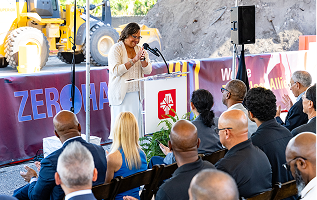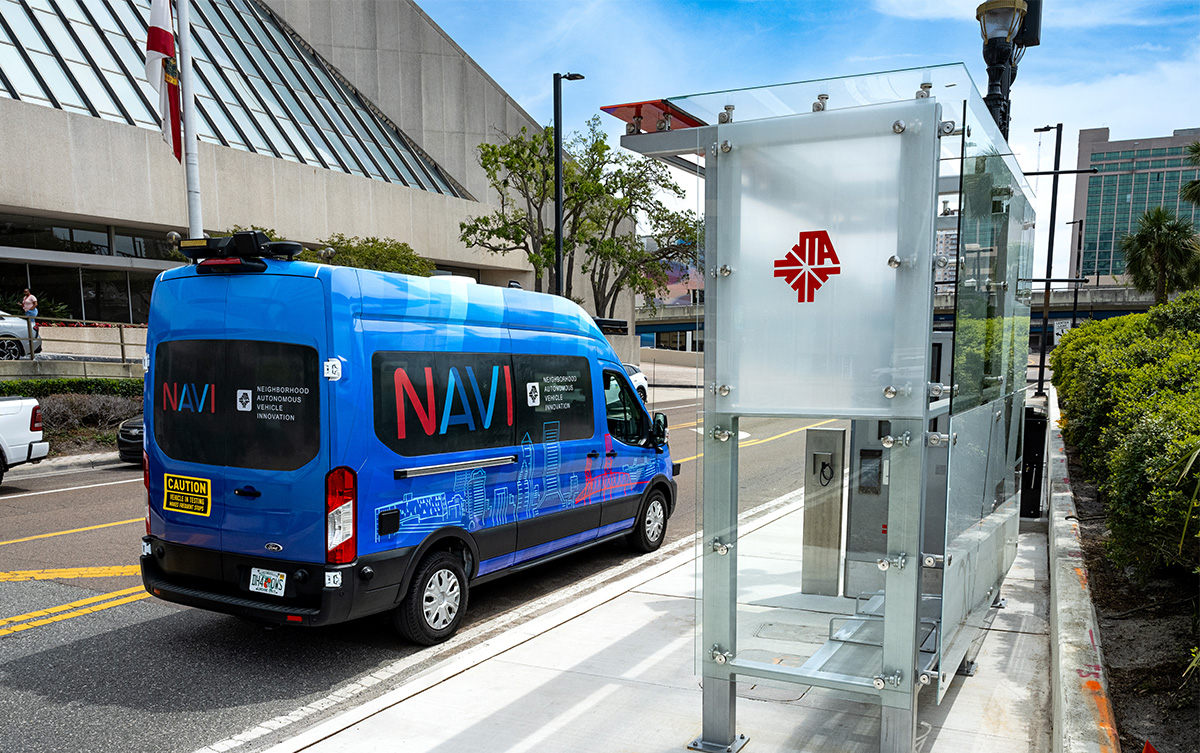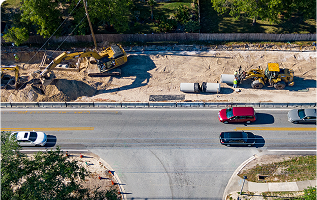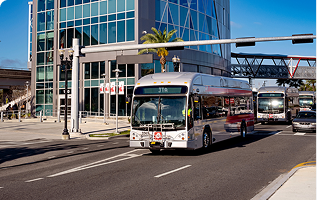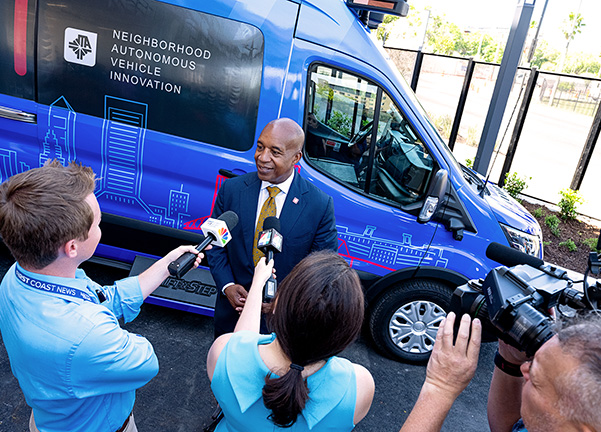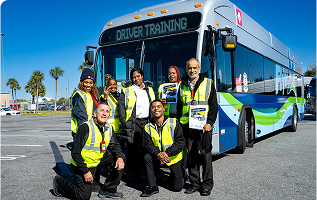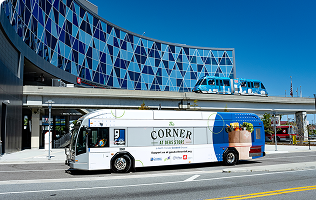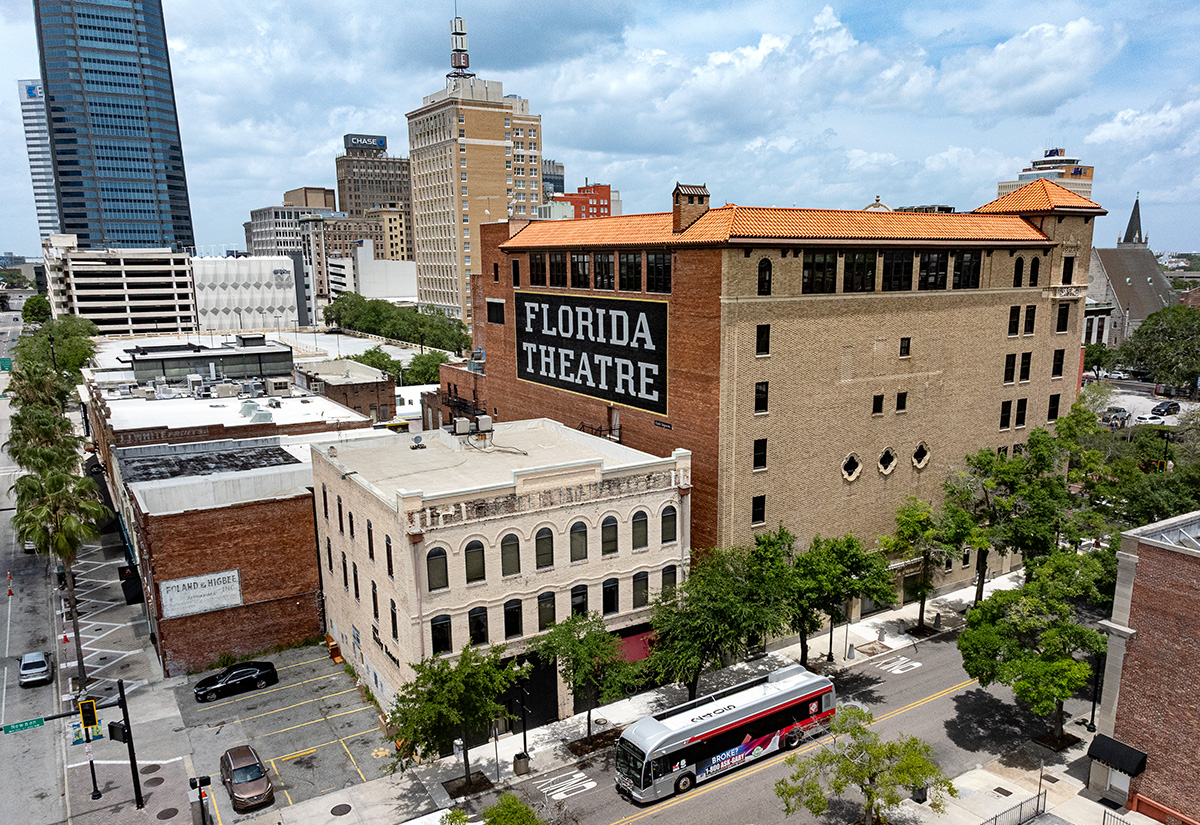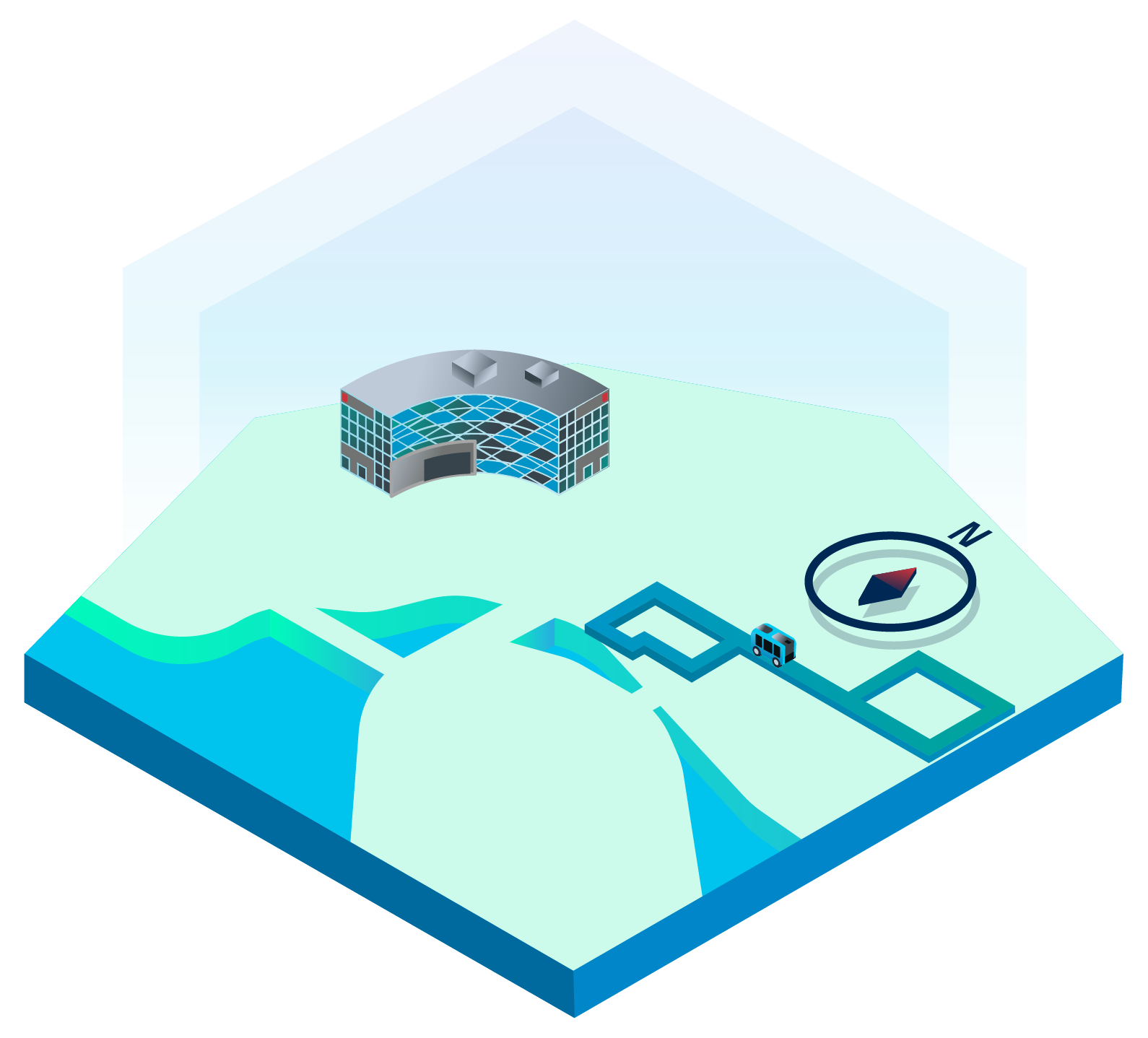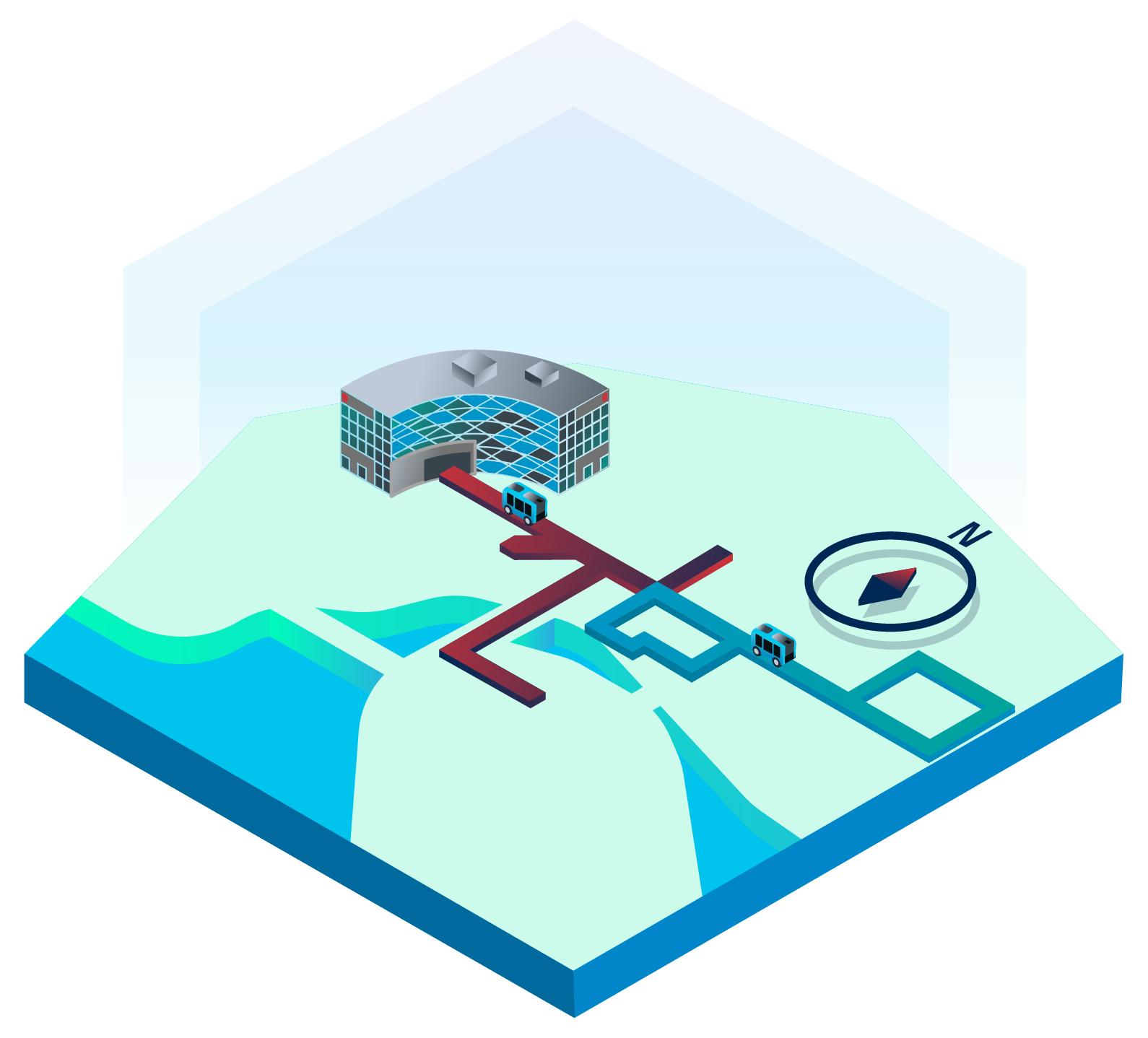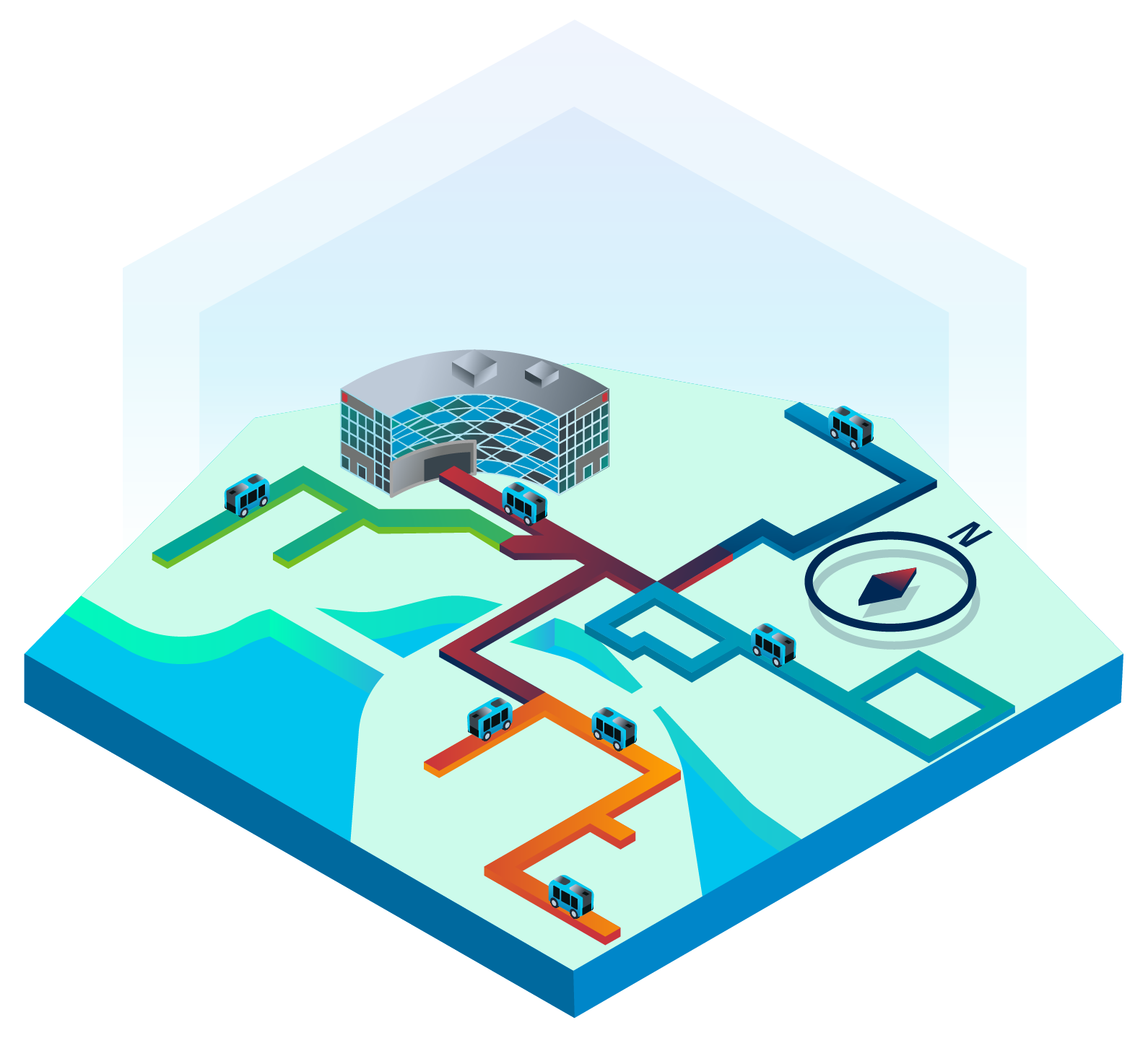Phase 3 | Active
Neighborhood Extensions
The JTA will expand upon the Bay Street Innovation Corridor by extending at-grade autonomous vehicle service into several neighborhoods surrounding Downtown Jacksonville Based on a Transit Concepts and Alternatives Review (TCAR), those plans include:
North Corridor
The historic Springfield area's residents and business owners are highly engaged in the community and host neighborhood festivals and events. This area also connects to UF Health.
West Corridor
Brooklyn and Riverside host large office towers and blend into historic homes, eclectic shops and restaurants. Redevelopment in the northern portion of the corridor is bringing more places to live, work, shop and dine.
South Corridor
The South portion of the corridor houses medical, office and residential towers.
Southeast Corridor
The historic San Marco neighborhood has charming homes and many small businesses.
RAISE Planning Grant
The JTA was awarded a RAISE Planning Grant from the U.S. DOT, which will advance the planning, environmental review and permitting, and preliminary project development activities for four Urban Circulator routes in the City of Jacksonville.
The city plans to expand the area served by the existing 2.5-mile Skyway by integrating autonomous vehicles along specific corridors. The first expansion (Bay Street Innovation Corridor) will open June 2025, while this grant will fund pre-construction activities for 7.5 expansion miles.
Complete: Negotiating Grant Agreement with U.S. DOT and FTA (May 2024)
Current Status: Procurement for RAISE Planning Grant - Ultimate Urban Circulator (U²C): Neighborhood Extension and Planning Project
Project Planning Completion Date: Late 2026


